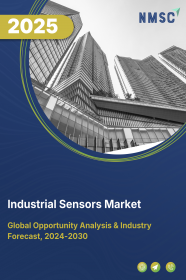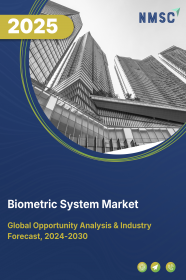
Application Specific Integrated Circuits (ASIC) Market by Type (Full Custom, Semi- Based Custom, and Programmable Logic Devices), by Technology (Digital ASICs, Analog ASICs, Mixed-Signal ASICs, and RF ASICs), by Application (Wireless Communication, Inferencing Application, Acceleration & Storage, Video & Broadcast, Process & Quality Control, and Others), and by End-User (IT & Telecommunication, Media & Entertainment, and Others) – Global Opportunity Analysis and Industry Forecast 2025-2030
Industry Overview
The global Application Specific Integrated Circuit (ASIC) Market size was valued at USD 19.72 billion in 2024, and is expected to be valued at USD 21.18 billion by the end of 2025. The industry is projected to grow further, hitting USD 30.33 billion by 2030, with a CAGR of 7.5% between 2025 and 2030.
The application-specific integrated circuit (ASIC) market is being propelled by the increasing demand for consumer electronics, advancements in automotive technologies, and the necessity for high-performance processor chips. Despite facing challenges such as high development costs and limited flexibility of chips, the emergence of 5G and Web 4.0 presents significant growth opportunities. Leading companies in the market, including NVIDIA Corporation, Advanced Micro Devices Inc. (AMD), and Honeywell International Inc., are enhancing their market presence through strategic partnerships, new product launches, and expansions.
Rising Consumer Electronics Demand Drives Expansion of the Market Growth
Increased use of smartphones, tablets, and smartwatches is boosting market growth. These devices need specialized chips for better performance, low power use, and small sizes. ASICs are designed to meet these needs, improving speed and efficiency. For example, Our World in Data reported 8.89 billion mobile phone subscriptions worldwide in 2023. This high demand for electronics raises market demand for application-specific integrated circuit, as companies rely on them to make devices faster and more energy-efficient. ASICs help power everyday gadgets, supporting market trends for smarter technology.
Advancements in Automotive Technology Strengthen ASIC Market Growth
Advancements in automotive systems, like self-driving cars and driver assistance tools, are growing the industry size. These systems require chips to process complex tasks quickly. ASICs offer customized solutions for reliable performance. In November 2023, Alchip Technologies launched a platform for automotive electronics, supporting self-driving cars and safety systems with low power use. This progress helps the market share of ASICs grow, as vehicles become more advanced, driving market trends toward connected and safe transportation.
Rise in Demand for High-Performance Processor Chips Accelerates Market Expansion
The need for fast and efficient processor chips is expanding the growth of the market. These chips work better than standard processors, making them ideal for data centers and telecommunications. For instance, in March 2024, MediaTek released an ASIC platform with optical technology, improving speed and performance for data centers and networks. This meets the market demand for quick processing in demanding fields like AI and 5G. Application-specific integrated circuits are key to faster technology, shaping market trends for modern computing.
High Development Costs and Limited Chip Flexibility Hinders Market Growth
The ASIC market is hindered by high development costs and limited chip flexibility. The creation of ASICs demands substantial investments in design, testing, and production, which can impede market growth, particularly for smaller companies that struggle to afford the expensive tools and processes required. Additionally, ASICs are designed for specific tasks and lack adaptability for new applications, which restricts their use in industries that require versatile solutions. For example, a chip developed for a smartphone camera cannot be repurposed for other functions like AI, necessitating new designs and thereby reducing market demand in a rapidly evolving technological landscape.
Integration of 5G and Web 4.0 Creates Ample Opportunities
The incorporation of 5G and Web 4.0 is creating opportunities for the ASIC market share. 5G networks need chips to handle fast data and complex tasks, while Web 4.0 supports advanced internet uses like augmented reality (AR) and the Internet of Things (IoT). For example, in 2024, Qualcomm improved its 5G ASICs to power IoT devices, such as smart home systems, with quick connections. Intel also developed chips for Web 4.0, supporting AR applications with real-time data processing. These innovations increase market demand for ASICs, driving industry size growth in connected technologies.
Market Segmentations and Scope of the Study
The ASIC market report is segmented on the basis of type, application, end-user, and region. On the basis of type, the market is divided into full custom, semi-based custom, and programmable logic devices. The semi-based custom is further classified into array-based and cell-based. Based on technology the market is segmented into, digital ASICs, analog ASICs, mixed-signal ASICs, and RF ASICs. On the basis of application, the market is segmented into wireless communication, inferencing application, acceleration & storage, video & broadcast, process & quality control, security & surveillance, and electrical distribution. On the basis of end-users, the market is classified into IT & telecommunication, media & entertainment, automotive, healthcare, aerospace, and consumer electronics. Regional breakdown and analysis of each of the aforesaid segments include regions comprising of North America, Europe, Asia-Pacific, and RoW.
Geographical Analysis
Asia-Pacific dominates the ASIC market, driven by high demand for consumer electronics like smartphones and tablets. China leads global semiconductor demand, with consumer electronics sales reaching USD 305 billion in 2023 and expected to hit USD 320 billion in 2024, as per the Shanghai Municipal People’s Government. This growth boosts ASIC demand for efficient, high-performance devices. Samsung Electronics expands ASIC production in South Korea for 5G and AI applications, while Universal Quantum’s 2024 ASIC for quantum processing advances emerging technologies. TSMC’s partnerships with regional manufacturers strengthen supply chains. China’s semiconductor export controls in 2024 create trade challenges, but the region’s robust 5G market, with 311 million connections in 2024, reinforces its market leadership.
North America experiences steady market growth, driven by efforts to build domestic semiconductor supply chains. The U.S., historically reliant on Asian chip imports, increases production through projects like Intel’s Arizona fab, which saw strong demand in 2024 amid global supply constraints. Canada’s POET Technologies develops ASICs for AI and automotive applications. Collaborations, such as NVIDIA’s 2024 multi-billion-dollar deal with TSMC for custom AI chips, enhance regional production. These efforts align with market trends toward self-sufficiency, supported by the CHIPS Act’s USD 52 billion investment, reducing reliance on foreign chips and driving market expansion.
Europe’s market expands, driven by demand for 5G infrastructure and healthcare technology. High production costs and limited local supply chains reduce competitiveness compared to Asia-Pacific. STMicroelectronics advances ASIC development, launching chips for medical wearables in 2024 to support efficient health monitoring, aligning with the EU’s sustainability goals. These initiatives foster market trends toward sustainable, high-performance chips, contributing to regional growth despite cost challenges.
The Rest of the World, particularly Latin America and Africa, offers emerging opportunities for market growth. Brazil’s smartphone penetration reached 80% in 2024, as per GSMA, driving ASIC demand for consumer electronics. South Africa’s healthcare sector adopts ASICs for diagnostic tools, with Medtronic’s 2024 chip integration for imaging systems gaining traction. Limited chip manufacturing capacity poses challenges. Projects like the UAE’s Mubadala Investment in semiconductor fabrication aim to diversify supply chains.
Key Players Advancing Custom Development and Strategic Collaborations to Accelerate Growth in the Global ASIC Market
Key players in the global ASIC industry, including NVIDIA Corporation, Samsung Electronics, Advanced Micro Devices Inc., and Universal Quantum Ltd., are driving market growth through strategic initiatives. NVIDIA, for instance, launched a dedicated ASIC department in January 2025 to develop custom chips for AI and large language models, meeting surging market demand. Samsung expands its ASIC production for 5G and IoT devices, leveraging partnerships with foundries to align with market trends. In April 2023, Advanced Micro Devices introduced the Alveo MA35D media accelerator, enhancing streaming services with AV1 support, strengthening its data center presence.
Universal Quantum’s July 2024 quantum ASIC launch targets scalable computing solutions, while Honeywell’s February 2025 collaboration with ForwardEdge ASIC LLC advances space-grade microelectronics. Intel and Qualcomm focus on automotive and mobile ASICs, respectively, with Intel supporting EV battery systems and Qualcomm boosting 5G connectivity. However, high design costs and complex development cycles challenge market expansion. Opportunities arise from rising AI and EV adoption, with global semiconductor demand projected to grow significantly by 2030. By navigating these hurdles, companies can innovate and capture market demand, ensuring sustained market growth.
Key Benefits
-
The report provides quantitative analysis and estimations of the ASIC industry from 2025 to 2030, which assists in identifying the prevailing market opportunities.
-
The study comprises a deep-dive analysis of the ASIC industry including the current and future trends to depict prevalent investment pockets in the market.
-
Information related to key drivers, restraints, and opportunities and their impact on the industry is provided in the report.
-
Competitive analysis of the players, along with their market share is provided in the report.
-
SWOT analysis and Porters Five Forces model is elaborated in the study.
-
Value chain analysis in the market study provides a clear picture of roles of stakeholders.
ASIC Market Key Segments
By Type
-
Full Custom
-
Semi-Based Custom
-
Array-Based
-
Cell-Based
-
-
Programmable Logic Devices
By Technology
-
Digital ASICs
-
Analog ASICs
-
Mixed-Signal ASICs
-
RF ASICs
By Application
-
Wireless Communication
-
Inferencing Application
-
Acceleration & Storage
-
Video & Broadcast
-
Process & Quality Control
-
Security & Surveillance
-
Electrical Distribution
By End-User
-
IT & Telecommunication
-
Media & Entertainment
-
Automotive
-
Healthcare
-
Aerospace
-
Consumer Electronics
By Region
-
North America
-
The U.S.
-
Canada
-
Mexico
-
-
Europe
-
The UK
-
Germany
-
France
-
Italy
-
Spain
-
Denmark
-
Netherlands
-
Finland
-
Sweden
-
Norway
-
Russia
-
Rest of Europe
-
-
Asia-Pacific
-
China
-
Japan
-
India
-
South Korea
-
Australia
-
Indonesia
-
Singapore
-
Taiwan
-
Thailand
-
Rest of Asia-Pacific
-
-
RoW
-
Latin America
-
Middle East
-
Africa
-
Key Players
-
Advanced Micro Devices Inc.
-
Bitmain technologies Ltd.
-
Infineon Technologies
-
Intel Corporation
-
Nvidia Corporations
-
Samsung Electronics Co. Ltd.
-
Global Unichip Corp.
-
Texas Instruments
-
On Semiconductors
-
Honeywell International Inc.
-
Renesas Electronics Corporation
-
Analog Devices Inc.
-
STMicroelectronics
-
Universal Quantum Ltd.
-
Qualcomm Technologies, Inc.
REPORT SCOPE AND SEGMENTATION:
|
Parameters |
Details |
|
Market Size in 2024 |
USD 19.72 billion |
|
Revenue Forecast in 2030 |
USD 30.33 billion |
|
Growth Rate |
CAGR of 7.5% from 2025 to 2030 |
|
Analysis Period |
2024–2030 |
|
Base Year Considered |
2024 |
|
Forecast Period |
2025–2030 |
|
Market Size Estimation |
Billion (USD) |
|
Growth Factors |
|
|
Countries Covered |
28 |
|
Companies Profiled |
15 |
|
Market Share |
Available for 10 companies |
|
Customization Scope |
Free customization (equivalent up to 80 working hours of analysts) after purchase. Addition or alteration to country, regional, and segment scope. |
|
Pricing and Purchase Options |
Avail customized purchase options to meet your exact research needs. |

















 Speak to Our Analyst
Speak to Our Analyst




















